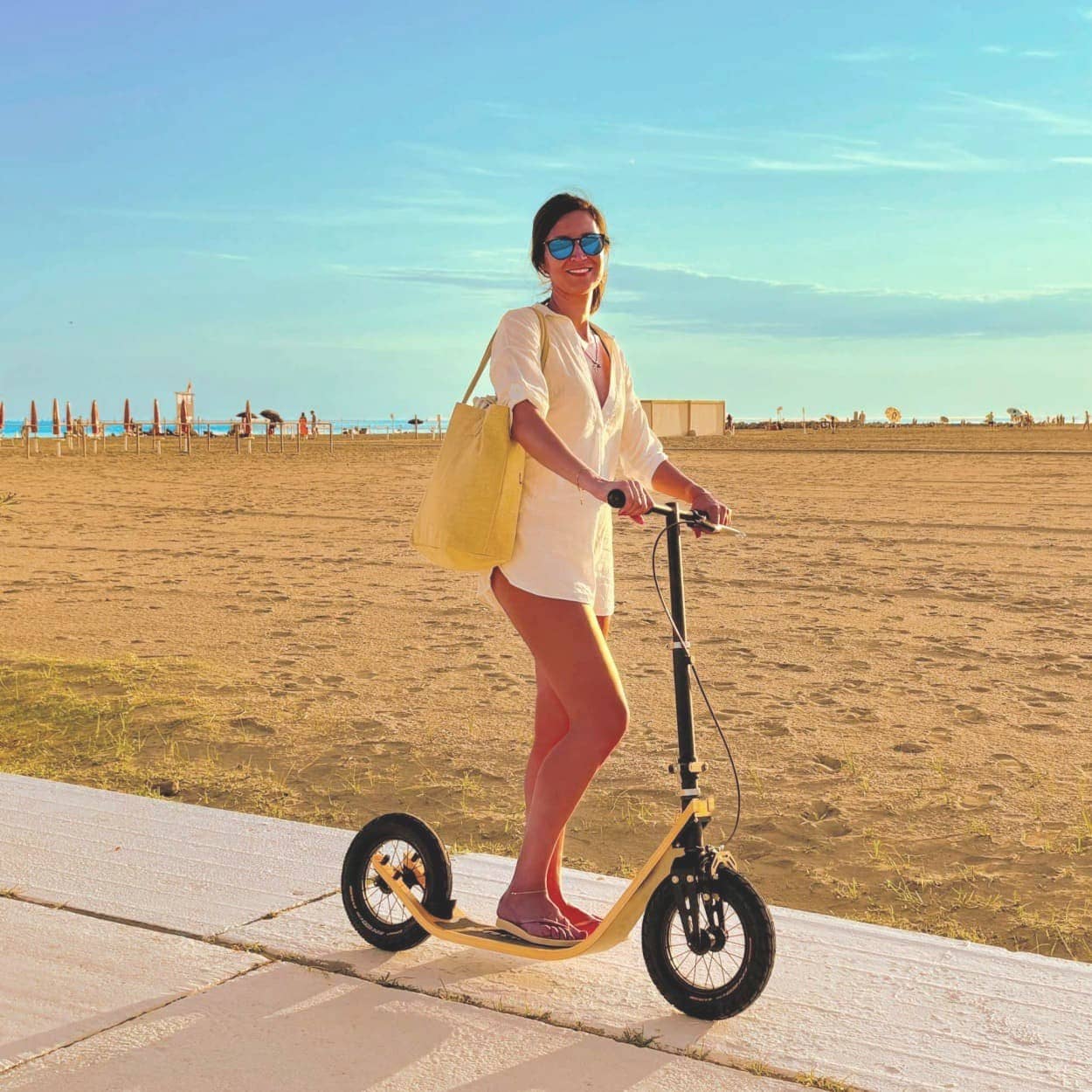
Fun Way to Lose Weight: Kick-Scooting
Many people make lifestyle changes with a single goal in mind: to lose weight. For most, the first step is often forcing themselves to regular exercises.
Can you really lose weight with kick-scooting? The short answer: more than you’d think. Kick-scooting can truly be the fun way to lose weight. With consistent rides, shedding 15 kilos is absolutely within reach.
But is there a scooter strong and comfortable enough to support heavier riders starting their journey? Yes. Some models are designed exactly for that. Keep reading to discover how it works and which scooter can truly carry you all the way to your goal.
Table of Contents
The Science Behind Weight Loss
One of the most common ways to lose weight is by creating a calorie deficit. It is based on the obvious fact that if you consume fewer calories than your body needs, it will start burning stored fat for energy, resulting in weight loss. Conversely, eating more than you burn will eventually lead to weight gain.
The 7700 kcal rule: It is generally accepted that a 7,700 kcal deficit per week results in a 1 kg weight loss. So, if you consume 1,100 fewer kcal per day, you should lose 1 kg in a week. This article dives deeper into the science behind this rule.
Naturally, calorie needs vary depending on factors like gender, metabolism, body weight, muscle mass, and physical activity. Pure calorie counting in itself can also be misleading, because one will need a balanced diet to stay healthy. An average adult woman needs 1,400–1,800 kcal per day, while an average adult man needs 2,200–2,800 kcal per day, plus any calories burned through exercise.
If you choose not to change your diet at all and instead burn 7,700 kcal purely through exercise, the result should be the same: 1 kg weight loss and a very sporty figure.
How Many Calories Does Kick-scooting Burn?
There are plenty of studies on how much the common exercises like running or walking burn. On average, running burns about 600–1,000 kcal per hour, while an hour of walking will burn between 200–400 kcal. However, studies on kickscooting are less common.
Thankfully, a detailed study [by Ashley G.B. Willmott of the University of Brighton and Neil S. Maxwell of Anglia Ruskin University] has shed some light on this. Supported by Micro Mobility Systems. The research showed that one hour of kick scooting at jogging speed (7 km/h or 4.5 mph) burns about 200–400 kcal. Kick-scooting at a faster running speed (12 km/h or 7.5 mph) burns between 400–600 kcal.
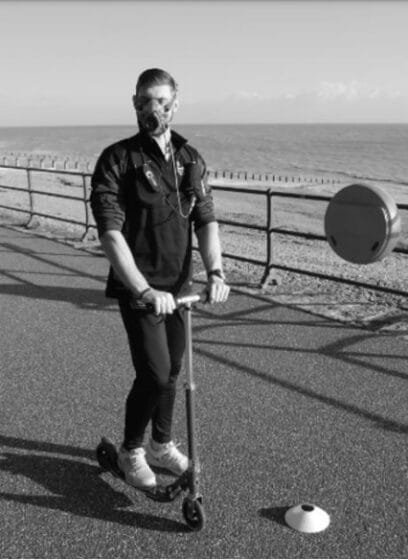
It is also worth noting that different types of exercise do not cover the same number of kilometers. If we examine how many calories we burn by covering a given distance, we find that we burn the most by running, we burn less by walking, and we burn the fewest calories by kick-scooting on the same distance.
Why choose kick-scooting, if we burn the fewest calories with it?
Because kick-scooting is a much more practical and sustainable form of exercise for daily life.
Walking 5 km to work and back home could take around 2.5 hours per day, which isn’t realistic for most.
Running 5 km to work would take just around 25 minutes, but nobody likes to arrive to work dripping sweat and out of their breaths. In contrast, kick-scooting 5 km to work takes just 25 minutes, a lot faster than walking, and much more convenient than running, while arriving to work refreshed, not tired, having fun on your way, and without the need to shower or change clothes.
Cycling, though a similar option, can be less practical due to storage and transport issues, especially on public transportation. When it comes to urban commuting, kick scooters have some great advantages over bikes: you can easily combine your commute of public transport or car with kick scooting. It is also worth mentioning that while you can certainly ride a bike faster than your kick scooter, on a 5-kilometer distance the time advantage of a bike is minimal or even none if your bikes are banned from certain streets where you can safely scoot.
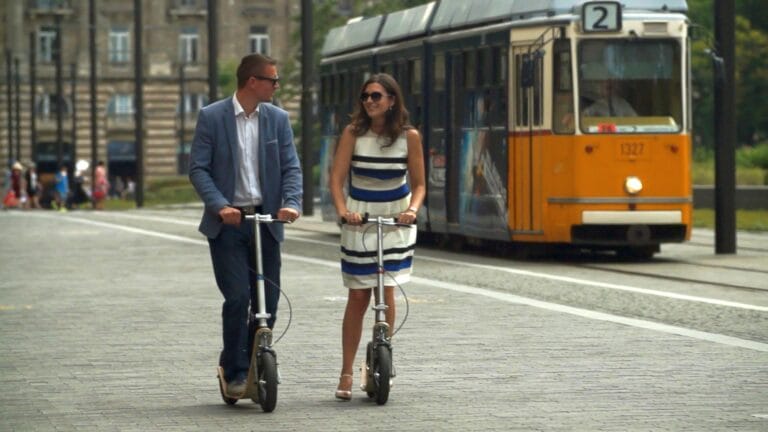
Okay, it really can be a fun way to lose weight, but how much?
If you kick-scoot 5 km to work and another 5 km home each day, you’ll spend about 2 x 25 minutes kick-scooting and burn roughly 350–500 kcal daily. Using the 7,700 kcal = 1 kg formula, this 350-500 kcal deficit translates to a possible weight loss of about 45–65 grams on each day you do this, that is 0.9–1.3 kg per month and around 10–15 kg per year—all without changing your diet!
And let’s not forget the other benefits of daily physical activity: improved heart and circulation, better lung functions, and overall better health and mental well-being! It is also a lot of fun!
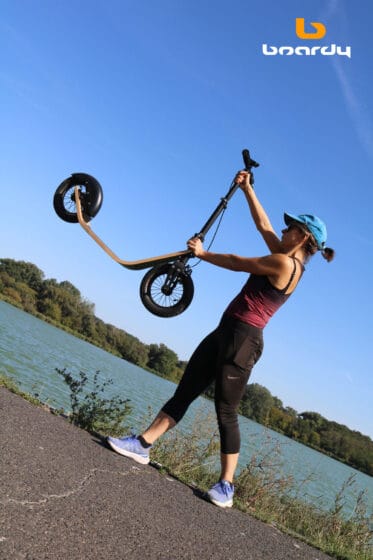
Choosing the Right Kick-scooter
If you’re over 100 kg, selecting a kick scooter with the appropriate weight capacity is crucial. While not all kick scooters are designed for heavier riders, some models cater specifically to this need. The BOARDY scooter, for instance, is engineered to support riders up to 150 kg, while still keeping perfect ride comfort for lighter riders (as low as 45-50 kg). Its wide deck accommodates larger shoe sizes, making it an excellent choice for those aiming to lose weight. Additionally, BOARDY is crafted from sustainable materials, offering an eco-friendly alternative to traditional scooters. Its design emphasizes longevity and repairability; ensuring your scooter remains a long-term companion on your fitness journey.
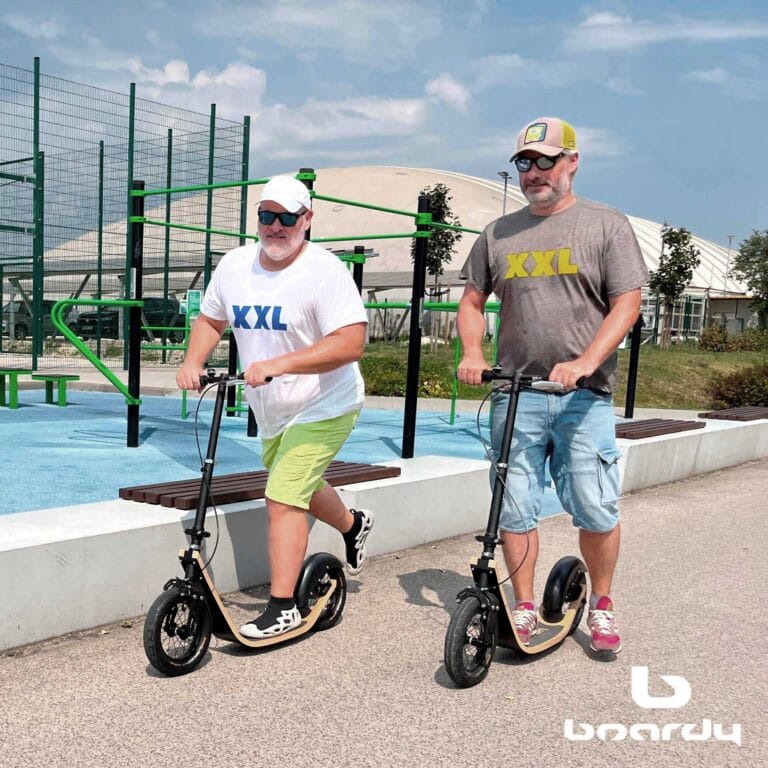
In summary, kick-scooting offers a sustainable, practical, and enjoyable method to shed weight, potentially up to 10–15 kg annually, while enhancing overall health.
So, keep moving and keep kick-scooting!



